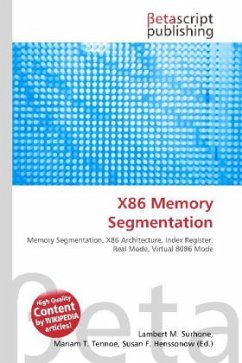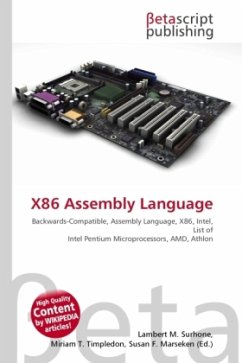
X86 Memory Segmentation
Versandkostenfrei!
Versandfertig in 6-10 Tagen
23,99 €
inkl. MwSt.

PAYBACK Punkte
12 °P sammeln!
Please note that the content of this book primarily consists of articles available from Wikipedia or other free sources online. x86 memory segmentation refers to the implementation of memory segmentation on the x86 architecture. Memory is divided into portions that may be addressed by a single index register without changing a 16-bit segment selector. In real mode or V86 mode, a segment is always 64 kilobytes in size (using 16-bit offsets). In protected mode, a segment can have variable length. In 16-bit real mode, enabling applications to make use of multiple memory segments (in order to acce...
Please note that the content of this book primarily consists of articles available from Wikipedia or other free sources online. x86 memory segmentation refers to the implementation of memory segmentation on the x86 architecture. Memory is divided into portions that may be addressed by a single index register without changing a 16-bit segment selector. In real mode or V86 mode, a segment is always 64 kilobytes in size (using 16-bit offsets). In protected mode, a segment can have variable length. In 16-bit real mode, enabling applications to make use of multiple memory segments (in order to access more memory than available in any one 64K-segment) was quite complex, but was viewed as a necessary evil for all but the smallest tools (which could do with less memory). The root of the problem was that no appropriate address-arithmetic instructions suitable for flat addressing of the entire memory range were available.












